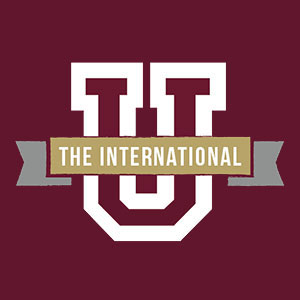TIF Grant to Connect Students, Educators

Texas A&M International University is becoming more connected to the rest of Texas. Thanks to a $815,490 Telecommunications Infrastructure Fund (TIF) Discovery grant, the Office of Distance Education will be able to expand services with an Enhanced Video Network.
According to Dr. Willie N. Cargill, director of the Office of Distance Education, the wireless network will integrate the University with area school districts.
"It will provide live, interactive, freshman to graduate-level class presentations from the University to nine school districts throughout the region. In addition, as we upgrade our routers and support equipment, the network will allow us to expand the internet connectivity of the school districts, including Laredo, United, Cotulla, Crystal City, Dilley, Freer, Webb, Jim Hogg (Hebbronville), and Zapata," said Dr. Cargill.
He explained that high school students, school teachers and college students will all be able to use the new network to continue their education.
"The system will provide outreach to area high schools so seniors can take university classes before graduation. In addition, public school teachers can obtain continuing education without driving to the Laredo campus. College students in distant communities may be able to schedule classes locally," he said.
This Fall, A&M International will receive about 10 distance education courses, including doctoral-level education classes from Texas A&M University, and a respiratory therapy class from University of Texas Health Science Center, San Antonio. The University is scheduled to originate one class in physics, and four graduate classes will be conducted using an online course management system called Blackboard. There are approximately 100 students involved in the various classes, and this number will increase as classes are coordinated with school district needs. A technical support person and a program manager will be hired to join the staff assistant and two work studies already employed.
Cargill said the network will allow the University to provide educational services to many more people.
"We intend to provide lifelong learning opportunities for the citizens of South Texas, in accordance with The Texas A&M University System's goals," explained Cargill. "Some of the instruction will be for university credit and some will be general knowledge instruction. Our goal is to offer this service to every citizen in every community within a hundred-mile radius of the University campus."
The competitive TIF Discovery grant award, according to Cargill, shows that the TIF Board has confidence in the abilities of the University.
"The TIF Board asked for innovative proposals. We proposed a wireless network to provide interactive video and high speed internet connections throughout our service area. This grant is a real vote of confidence by the Board," Cargill explained
The TIF Board's mission is to help Texas create an advanced telecommunications infrastructure by encouraging connectivity in public schools, higher education, public libraries, and non-profit healthcare facilities, in order to spur economic development throughout Texas. In addition, over a million students are expected to be enrolled in higher education in Texas by 2010. Distance education, resting on the backbone of telecommunications, will be one way to meet the needs of the expanding student body.
For more information about the TIF Grant or distance education please contact Cargill by phone, 956.326.2501, visit offices in Anthony J. and Georgia A. Pellegrino Hall, room 304C or go online: www.tamiu.edu.
University office hours are 8 a.m. - 5 p.m. Monday through Friday.
Journalists who need additional information or help with media requests and interviews should contact the Office of Public Affairs and Information Services at pais@tamiu.edu